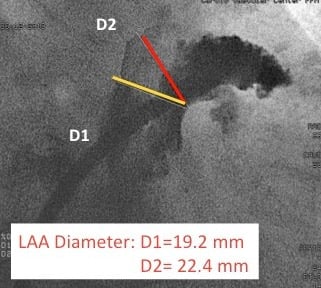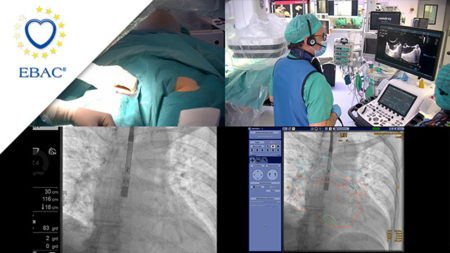02 Oct 2025
Left atrial appendage occlusion
The PCR Textbook
This PCR Textbook chapter reviews the underlying concepts involving atrial fibrillation, outlines anticoagulation strategies for thromboembolism prevention, and describes the current state and future directions of left atrial appendage occlusion.
Summary
Atrial fibrillation is the most common arrhythmia worldwide, with a lifetime incidence approaching 25% and an ever-increasing prevalence in an aging society. It is projected that by the year 2050, 6 to 12% of the world’s population will be diagnosed with atrial fibrillation, and 18 million will be affected in Europe by the year 2060.
The most devastating consequences of atrial fibrillation are embolic cerebrovascular accidents. While anticoagulation strategies result in significant reductions in embolic events, they are not without limitations and complications, namely bleeding. In patients with atrial fibrillation, the vast majority of thrombus originates in the left atrial appendage. Exclusion of the left atrial appendage has been demonstrated to be as effective as oral anticoagulation with Vitamin K antagonists in the prevention of disabling strokes and obviates the need for chronic anticoagulant therapy.
The field of transcatheter endovascular left atrial appendage occlusion (LAAO) has expanded exponentially since its inception two decades ago and is potentially emerging as the anti-embolic treatment of choice for patients with nonvalvular atrial fibrillation pending the results of highly anticipated trials. While the Watchman and Amplatzer Amulet devices dominate the transcatheter percutaneous LAAO market shares in both Europe and America, the structural proceduralist will soon be able to choose from multiple device options to accommodate the wide variation of LAA morphologies present in the human population. LAAO devices are currently indicated in patients with nonvalvular atrial fibrillation with contraindications to anticoagulation. While no procedure is risk-free, device iteration has resulted in improved safety and versatility. This chapter reviews the underlying concepts involving atrial fibrillation, outlines anticoagulation strategies for thromboembolism prevention, and describes the current state and future directions of left atrial appendage occlusion.

Angiographic measurements (RAO caudal) of the LAA
Authors
Jessica V. Kaczmarek, Daniel H. Steinberg, Nicholas S. Amoroso, Stefan Bertog, Jennifer Franke, Iris Grunwald, Horst Sievert



